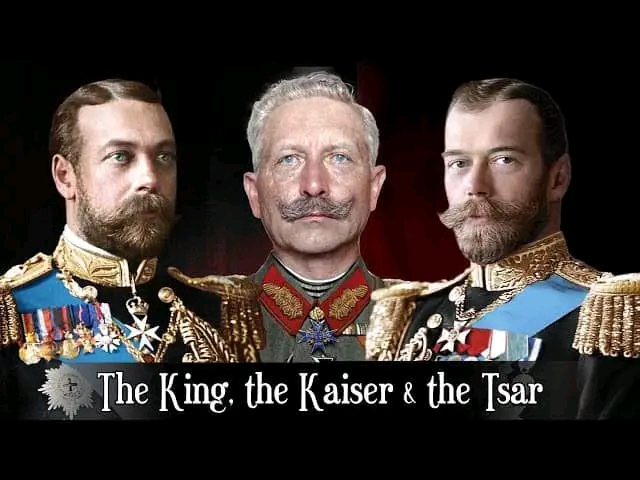Did you know that at the time of the First World War, the rulers of the world’s three greatest nations – King George V of Great Britain and Tsar Nicholas II of Russia on the one hand, and Kaiser Wilhelm II of Germany on the other – were first cousins? Their grandmother was Queen Victoria.
Their familial connections was ultimately insufficient to prevent the war, which pitted George’s United Kingdom and Nicholas’ Russia against Wilhelm’s Germany.
King George V and Tsar Nicholas II were first cousins, as their mothers were sisters from the house of Denmark. Moreover, Wilhelm and Nicholas were distant cousins via the Russian and Prussian royal houses. The three leaders were heads of state for the Allied Powers and the Central Powers.
Despite their close relationships, the monarchs found themselves on opposing sides during the war. In the lead-up to World War I, Wilhelm and Nicholas II communicated via letters and telegrams, expressing growing concerns about the increasing likelihood of conflict between their countries. Tsar Nicholas II wrote to Kaiser Wilhelm in 1914, appealing to their “old friendship” and urging him to prevent his allies from “going too far” to avert a European war.
The complex relationships of George, Nicholas, and Wilhelm were only one factor that contributed to the outbreak of war in 1914. After the Russian Revolution in 1917, George V made the controversial choice to deny asylum in England to his cousin, Tsar Nicholas II, and his family, fearing potential repercussions.
After World War I, Wilhelm abdicated the German throne and was exiled to the Netherlands, where he remained for the rest of his life. Nicholas abdicated, was arrested, and, in 1918, was executed with his family. King George V remained the monarch of the United Kingdom until his death in 1936.

